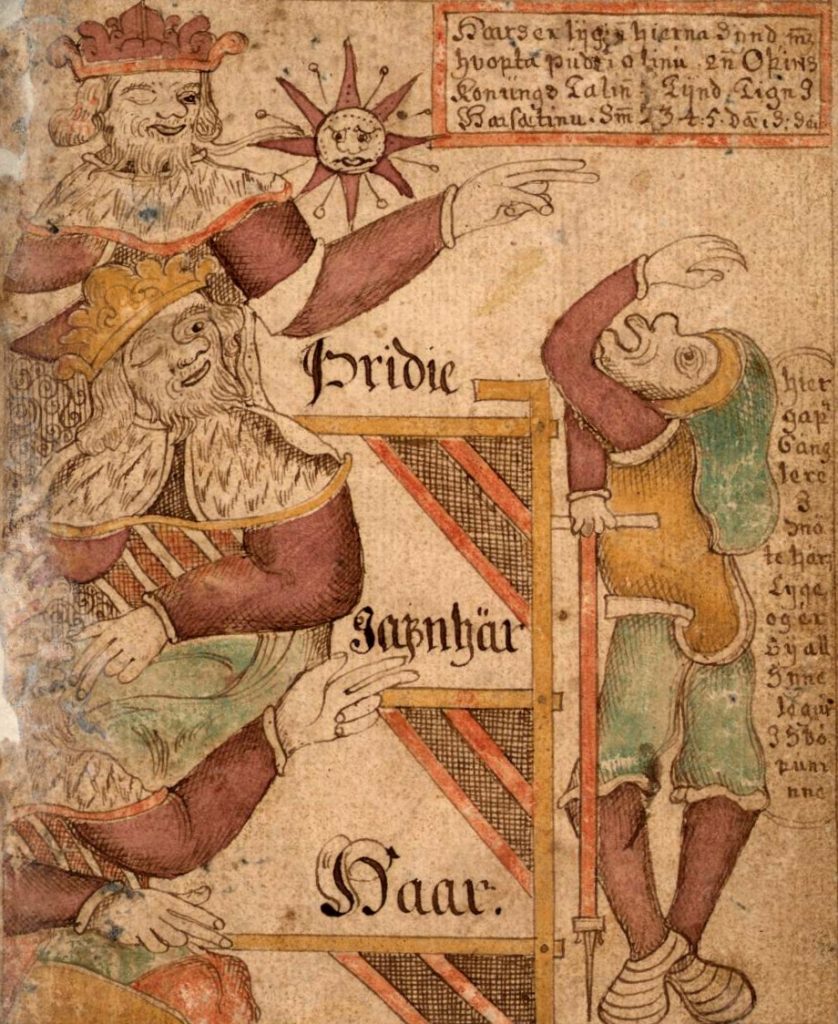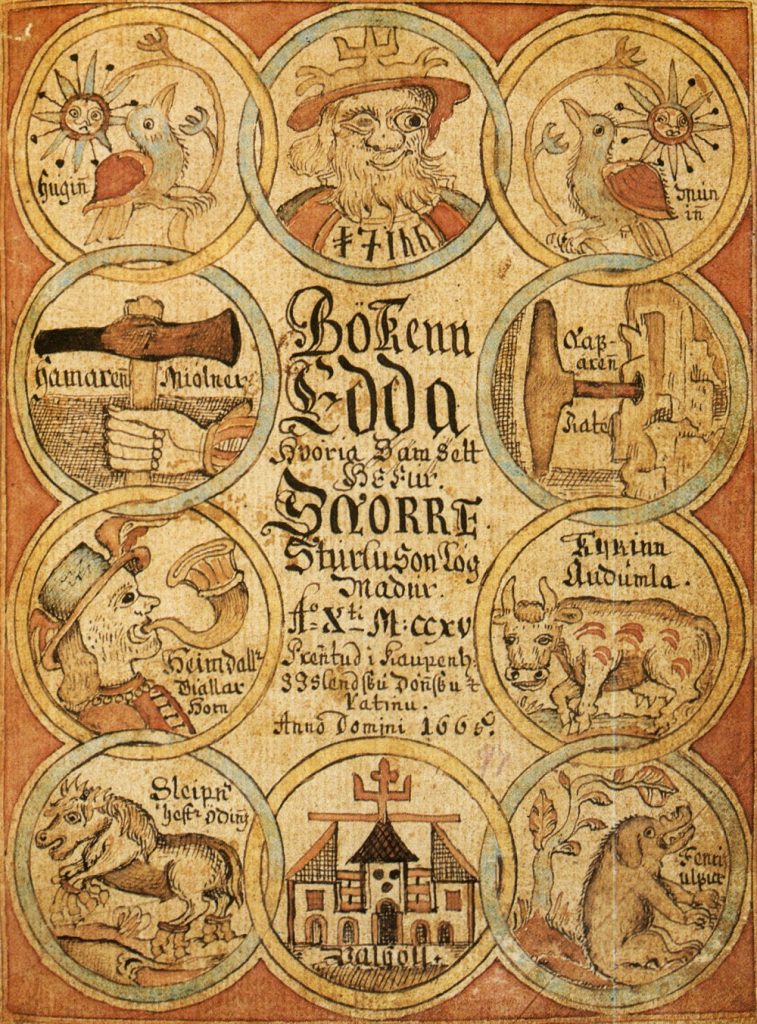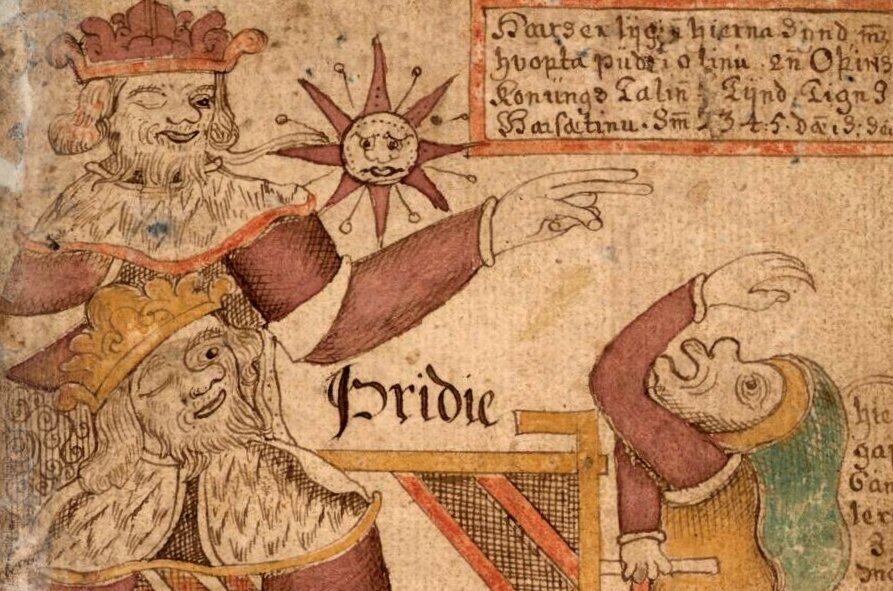The Gylfaginning is the very first book of the Prose Edda and sets up the retelling of Old Norse sagas of the Æsir gods of Asgard. The Gylfaginning follows the king of Sweden, Gylfi, as he travels to learn more about the Norse gods found within the second book of the Prose Edda.
The Prose Edda was written by Snorri Sturluson around 1222. It comprises four parts: the Prologue, the Gylfaginning (full text here), the Skaldskaparmal, and the Háttatal. While it’s the most prolific retelling of the surviving stories in the Poetic Edda, it wasn’t its original intention. Snorri wrote the Prose Edda using Old Norse sagas as a template to demonstrate how to write Viking poetry.
What makes the story of Glyfi in the Gylfaginning different is that Snorri wrote it 100 percent and has no foundations in Norse lore. Gylfi is simply an invention of Snorri Sturluson to tell the tales of the Norse gods.
Why Is It called the deluding of Gylfi?
Snorri Sturluson was a Christian poet who respected Norse mythology but didn’t believe in it. It’s called the delusion of Gylfi because Snorri accepted the Old Norse sagas as nothing more than myths.
In setting up the deluding of Gyfi, he tells the reader that the sagas told within its pages are tall tales. It is one of the reasons that the Prose Edda is continuously under scrutiny by modern Norse scholars.
The stories from the Prose Edda have foundations in the Poetic Edda, but they’re filtered through a Christan lens.
The Deluding of Gylfi Summary
The Gylfaginning serves as a framework to retell Old Norse sagas sampled from surviving Nordic texts through the eyes of Gylfi. The Poetic Edda is dense, scattered, and sometimes hard to follow.
In the Gylfaginning, Snorri approached the Norse tales from the beginning down to Ragnarök, which makes them much easier to digest. The Deluding of Gylfi isn’t a part of the Norse mythos but rather an invention of Snorri Sturluson to make the lore easier to understand.

Where is the story about the delusion of Gylfi set?
At the beginning of the Gylfaginning, Gylfi is in modern-day Sweden. King Gylfi disguises himself as a humble traveler named Gangleri to seek wisdom about the ancient Norse gods to take back to his people.
When he encounters High One, Just-as-High, and Third, they are all sitting on ornate thrones in Asgard.
What does Gylfi ask about at the beginning of the story?
Gangleri wanted to know about the universe’s origins and the end of the world (aka Ragnarök). Here, Snorri samples the old Poetic Edda poem, the Völuspá, to tell the tale of how the universe came to be.
At the universe’s beginning, Odin, Vili, and Vé killed a giant named Ymir. From Ymir’s body, they shaped the world we know from the earth, sky, and even the stars in the sky.
What does Gylfi do in the story?
Gylfis’s primary purpose in the Gylfaginning is to ask the Æsir gods about the universe’s origin. The gods High One, Just-as-High, and Third (Odin in disguise) answer all of the Scandinavian king’s questions.
He sits, ever so patiently, as the gods recount the old sagas of the Æsir gods. They talked about the Norns (the weavers of fate) and other gods like Frigg, Freyja, Loki, Baldr, Narfi, and Sif.
In the stories retold in this book of the Prose Edda, we learn much about the Norse gods and their home in Asgard. They also recounted Bifrost, the only link between Asgard and the human realms.
After many questions, Gylfi asked about the difference between summer and winter, and this question annoyed the gods. They gave him a response that didn’t exactly answer it and then disappeared, leaving Gyfi in an empty room. He left and returned the things he learned to the people of Iceland.
What is the name of the king that Gylfi meets?
The Gylfaginning, in a nutshell, is a conversation between the king of Sweden and the king of Asgard, Odin.
When Gylfi arrives in presumably Asgard, he enters a hall with three thrones occupied by High One, Just-as-High, and Third. Even though Gylfi disguises himself as a humble traveler named Gangleri, the Æsir gods anticipate his arrival and devise a scheme.
While Gangleri approached three gods not found within the germanic myths, they were Odin in disguise.
About the Author
Snorri Sturluson is the author of one of the most prolific historical records of Norse mythology, the Prose Edda. While the Prose Edda has its problems, it is one of the most substantial texts that preserve many of the sagas and origins of Norse mythology outside of the Poetic Edda. He organizes the tales much easier for the reader to understand.

Snorri was a poet, politician, historian, and Christian. Many scholars believe that the Deluding of Gylfi was a clever way for Snorri to recount the Norse sagas without being sacrilegious to his Christian faith.
Some of the tales within theGylfaginning are reshaped through Christian ideologies or made up entirely to fill in gaps. With so few surviving texts, Snorri took quite a few liberties that are still hotly debated by scholars today.

